Marketing Strategies
ABM Is Not A ‘Set-It-And-Forget-It’ Tactic
/
/Account-based marketing (ABM) has its share of disciples who swear that it’s the best way to pursue prospects: 73% of respondents to a Demand Gen Report survey said they practice ABM to “ensure they are targeting the right stakeholders.” Yet, a surprising number of B2B organizations risk being too rigid in their adoption of ABM, focusing solely on their list of target accounts to the detriment of all other potential prospects and marketing opportunities.
ABM doesn’t have to be a locked list with no room for adjustment. In fact, keeping a static ABM list and only working from that list misses the point entirely of focused efforts to improve ROI. B2B marketers can use their target account lists as a starting point to experiment and find new prospects, without devolving back to inefficient spray and pray strategies. All it takes is reliable data and a willingness to go beyond the world of known accounts.
ABM With Blinders On
The reason so many enterprises are adopting ABM is because there is a great deal of value in dealing with targeted accounts. It lets marketing and sales coordinate on efforts, communicate in a one-to-one fashion, and tailor their campaigns and sales efforts with the right messaging for different parts of the funnel. The partner ecosystem is evolving to take advantage of the popularity, with Customer Data Platforms (CDPs) and other platforms building software solutions specifically for ABM.
This tactic has become so popular that there are businesses out there that are now saying they only pursue named accounts, or that they keep a locked ABM list that doesn’t change or grow based on new information.
Companies that maintain static ABM lists may do so for a number of reasons, including staffing or budget constraints. Still, limiting marketing so severely doesn’t make much sense. If a brand wants to target 500 accounts only, why would it ignore a comparable company outside of those 500 that is displaying intent signals and has similar purchasing power? In other words, why miss out on a sale because it’s outside of the target account list?
Implementing Whitespace Strategies
It seems obvious that there are selling opportunities outside of a locked list of named accounts. The issue is that many B2B marketers seem to think in terms of a binary: ABM is tightly targeted, and everything else is inefficient spray and pray. But that’s not the case. The world of marketing data makes it easy to find new prospects that might be interested in a product or service.
The best place to start is to use a predefined list of accounts as a starter file, then include anything outside of that universe as “new.” When the two spaces – known accounts and new accounts – are defined and separated, it’s easier to manage and manipulate the lists.
B2B marketers can also rely on lookalikes, validating their target-account strategy by identifying and profiling similar types of companies. The accounts that emerge might be net new, but they also look similar to your other named accounts. This is a lot more precise and efficient than opening your marketing strategy to anybody and everybody outside of the list.
Another key thing is to start using this type of strategy with the sales teams. Yes, ABM is about channeling marketing toward the likely targets, but it is often easier to see immediate ROI using new data sources in a sales capacity first, and only then expanding to marketing tactics. Take that list of net new companies generated earlier, hand it to an outbound salesperson and ask them to contact the accounts. They’ll likely have success securing meetings, and it’s much easier to track and attribute the success of that effort than it is to start with marketing and go all the way through the sales cycle waiting for conversions.
The benefits of going beyond an ABM list are significant. B2B companies, like consumers, will move in and out of different stages of the sales funnel, and there may be a promising prospect that you didn’t know the day before. No retail store is going to put someone in the front door and turn people away because they’re not the right audience for the brand or product. Going after new accounts is low hanging fruit, and all ABM-inclined B2B marketers should be doing so.
Brian Dudley is Bombora’s VP of Customer Success. He brings almost 20 years of B2B MarTech and agency experience to Bombora. He oversees the company’s Customer Success and Operations teams and is dedicated to helping clients, partners and agencies get the most out of their relationship with Bombora and intent data.
Marketing Strategies
How to Create Content for Every Stage of the Buyer's Journey
No one wakes up in the morning and decides, “I’m going to buy something today.” Instead, they go through a path to purchase that includes research and evaluation before committing to a sales call.
That journey is called the buyer’s journey. Because consumers are more informed and more empowered than ever before, it’s important to deeply understand your buyer persona and the journey they make so you can create content that helps them along that path while positioning you as an authority in your space.
In this post, we’ll cover:
- Understanding the Buyer’s Journey in Marketing
- What a Marketing Funnel Is
- Marketing Channels for Each Stage of the Funnel
- Creating Content for Each Stage of the Buyer’s Journey
Understanding the Buyer’s Journey in Marketing
In most cases, with the exception of impulse buys, an individual begins their journey in an “unaware stage.” This individual likely fits the demographics of your ideal client (also known as your buyer persona), but they are not aware of your product or in need of it.
However, they may experience a triggering event that changes their situation or a pain that needs to be solved. This kicks off their buyer’s journey.
When you don’t have a complete understanding your audience, a disconnect is created between your business and your potential customers. For content marketers, this usually means you’re putting out content that your readers don’t really relate with, which can cause you to lose them.
As is the case in all marketing disciplines, it’s important to understand your audience: how they think, the answers they seek, and the path they tend to take to find a solution. From that research, you can begin crafting a documented content strategy that maps your content to the various stages of the buyer’s journey.
Developing the buyer’s journey for your business is the first step to creating content that resonates with your buyer and building out your marketing funnel so that you can meet them at each stage of their journey.
What Is a Marketing Funnel?
A marketing funnel — more commonly known as a sales funnel since its output is revenue — describes the different stages a customer goes through leading up to their purchase, from looking at your website for the first time and subscribing to your email list to reading your emails and talking to a sales associate.
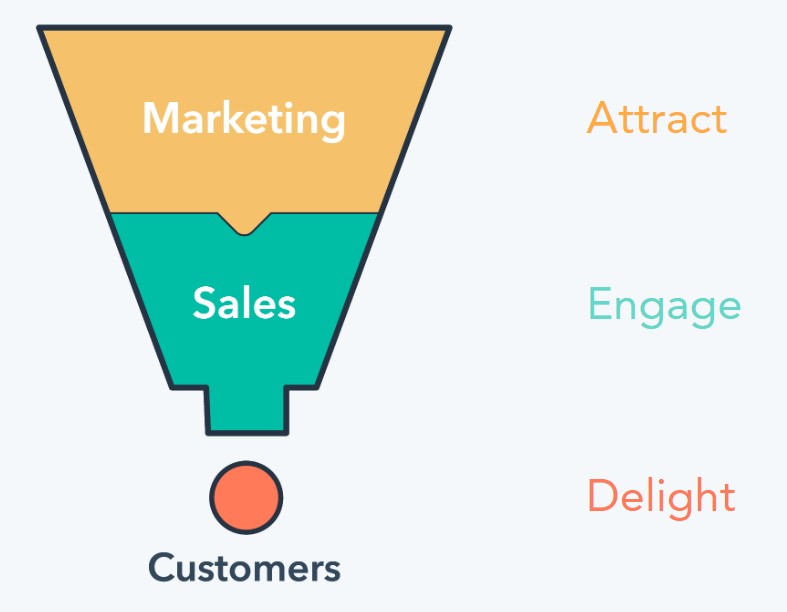
How the funnel works is simple. The top of the funnel indicates they are further away from a purchasing decision while those who make it to the bottom of the funnel are closer to a purchasing decision.
Often, it’s a marketer’s job to attract your buyer persona in the early stages of their journey and hand off qualified prospects to the sales team to engage them. Once they become a customer, your service team delights them so that they buy from you again and again and tell all their friends.
The funnel is a useful tool when used in the context of the buyer’s journey. However, keep in mind that the funnel has one issue: It puts customers as the output. At INBOUND 18, HubSpot officially retires the funnel in favor of the flywheel.
 The result puts customers at the center, which creates a more unified and less linear approach to all your marketing, sales, and service activities.
The result puts customers at the center, which creates a more unified and less linear approach to all your marketing, sales, and service activities.
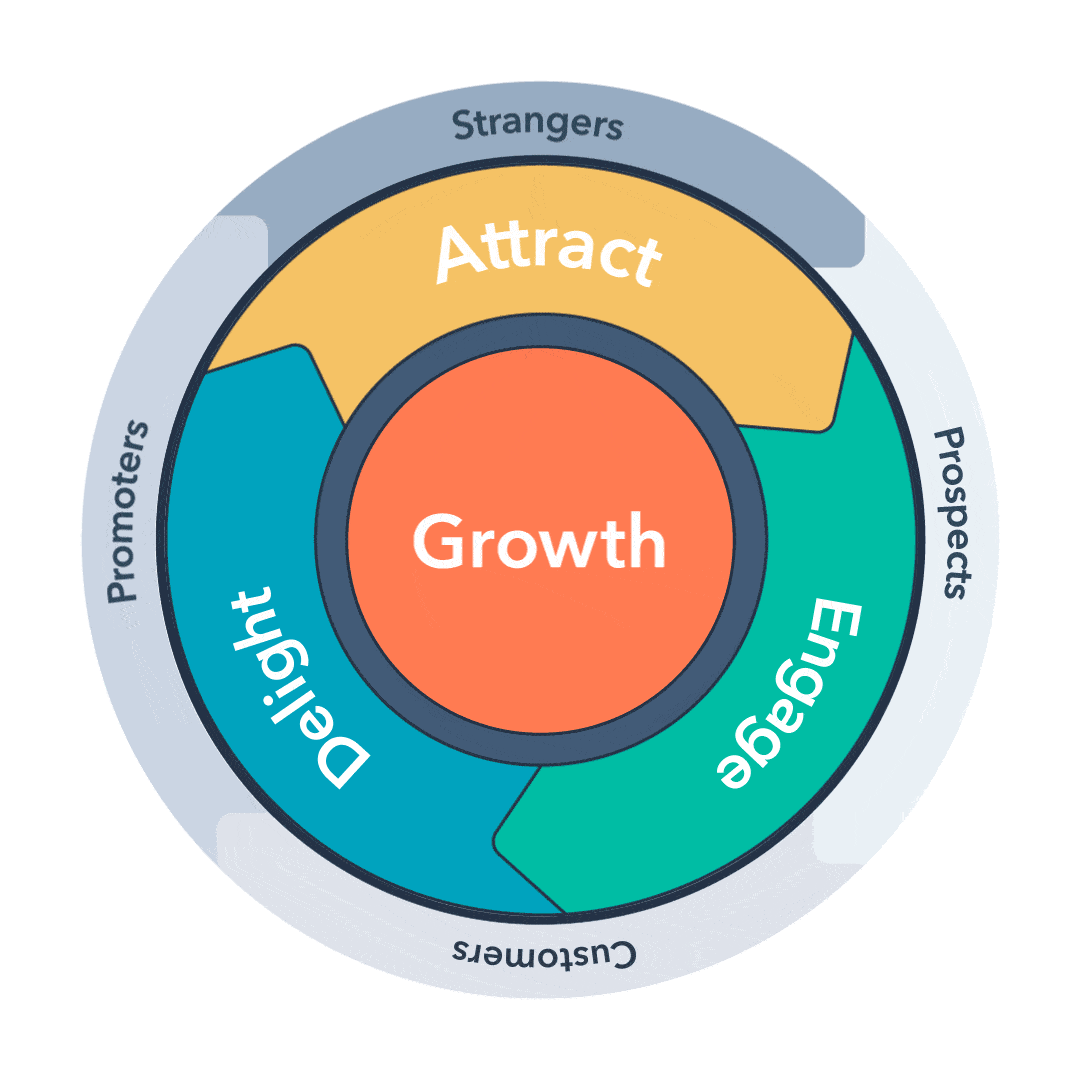
Marketing Funnel Stages
Even so, the funnel is still a good starting point before you begin moving to your flywheel strategy.
All you have to do take the buyer’s journey and ask the question: “How do we attract and engage this person so they become a customer?”
Whether you subscribe to the funnel or the flywheel methodology, earning business from your prospects comes down to three simple things:
- Attracting strangers
- Engaging prospects
- Delighting customers
As you create create content that performs these functions, you’ll consider the stage they’re at in their journey and the best channels to put the content in front of them.
The internet has made it easier for marketers (and salespeople) to engage customers at the various stages of their journey using content marketing. That’s one of the main reasons that 60% of marketers consider content as ‘very important’ or ‘extremely important’ to their overall strategy.
However, it can be challenging to create the right content, for the right people, at the right time.
Marketing Channels for Each Stage of the Funnel
Building a content strategy starts with identifying the channels in which you’ll reach your audience.
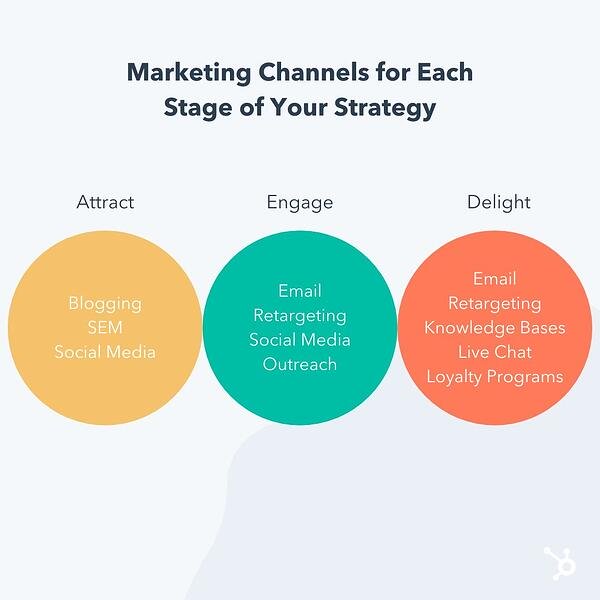
Marketing Channels for the Attract Stage
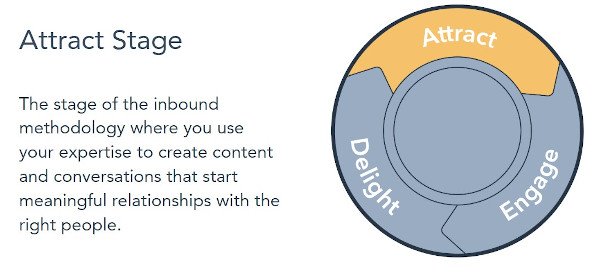 Remember, a large majority of your prospects may even be in the awareness stage of their buyer’s journey when you begin to attract them. That means your goal is to solve for their pains/problems by creating content they can easily discover and consume.
Remember, a large majority of your prospects may even be in the awareness stage of their buyer’s journey when you begin to attract them. That means your goal is to solve for their pains/problems by creating content they can easily discover and consume.
At this point, a buyer is trying to solve problems, get an answer, or meet a need. They’re looking for top-level educational content to help direct them to a solution, like blog posts, social content, and ebooks. Their value as a lead is low because there’s no guarantee that they’ll buy from you. But those who find your content helpful and interesting may journey on to the middle of the funnel.
The ideal channels for your attract stage may include:
- Blogging
- Search Engine Marketing
- Social Media Marketing
Marketing Channels for the Engage Stage
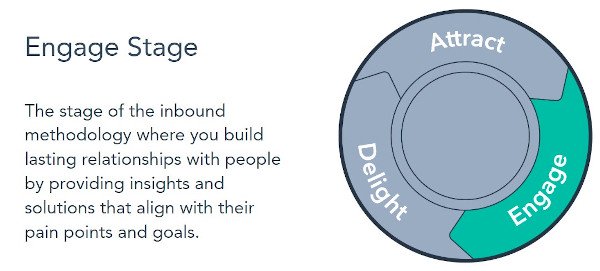
When someone moves into the middle of your funnel, it means you’ve captured their attention. They know they have a problem that has to be solved, and now they’re trying to discover the best solution. The need for a future purchase commitment creeps up as they’re evaluation their options.
While the top of the funnel is designed to educate a prospect, this is the stage where you want to show why your solutions in particular are the best fit.
(You also want to help people determine if they’re not a good fit, which will be very important later for healthy customer retention. If you convince customers to buy who aren’t a good fit for your business in the long run, you could be shooting yourself in the foot in the form of high churn rate later.)
The middle of the funnel is typically a point of extended engagement where you’re nurturing a lead, building a relationship, and establishing trust between the audience and your brand.
The ideal channels for your engage stage may include:
- Email Marketing
- Retargeting/Remarketing
- Social Media
You also need to engage prospects at the bottom of your funnel.
The bottom of the funnel is where someone is making the actual purchase decision. They’re ready to buy, but that still doesn’t guarantee that they’re going to buy from you. That’s the last choice they have to make: Where do they get the solution they’re seeking?
In most cases, leads at the bottom of your funnel just need that final nudge and that compelling call-to-action to get them to make a purchase decision. The right offer and content at this stage can have a dramatic impact on lifting your conversions.
You might also consider sales outreach to engage qualified prospects and continue to engage them through personalization and contextual marketing.
Marketing Channels for the Delight Stage

Marketing shouldn’t stop once someone becomes a customer. Cultivating a relationship with your customer beyond the sale can lead to higher customer lifetime value as well as word-of-mouth referrals and more.
The key here is to go above and beyond their expectations and provide a customer experience that’s easy and frictionless.
The ideal channels for your delight stage may include:
- Email Marketing
- Retargeting/Remarketing
- Self-Service Channels Such as Knowledge Bases
- Live Chat and Chatbots for Service
- Loyalty Programs
On the surface, this process seems really linear, but you can also target multiple stages of the buyer’s journey across channels.
For example, you may still be able to attract someone in the consideration stage or delight someone who isn’t a customer yet. Your knowledge base might convince someone in the consideration stage to buy since they perceive that you have great service, or someone in the awareness stage could engage your chatbot to find the content they need.
One of the joys of content marketing is thinking outside the box.
Creating Content for Each Stage of the Buyer’s Journey
Once you have an idea of who your buyer persona is and what channels will work best for your business, you can begin creating content for your buyer at different stages and tailor that content per channel.
Doing so can help you map your content to the relevant stages of the buyer’s journey to make your funnel.
- Top of the Funnel: The “awareness” stage, where people looking for answers, resources, education, research data, opinions, and insight.
- Middle of the Funnel: The “evaluation” stage, where people are doing heavy research on whether or not your product or service is a good fit for them.
- Bottom of the Funnel: The “purchase” stage, where people are figuring out exactly what it would take to become a customer.
Your funnel may look very different depending on factors like your industry, business model, product, pricing, and audience. Some B2C customers, for example, spend very little time in the middle of the funnel compared to B2B customers that require far more nurturing, engagement, and relationship development before a purchase is made. A $50 pair of sneakers, for instance, requires a lot less handholding when it comes to making purchase decisions than a $10,000 business software investment.
Content Ideas for Each Stage of the Buyer’s Journey
Because audiences can vary so widely based on industry and intent, persona research is of the utmost importance. Only by understanding their unique process for awareness and evaluation will you be able to create a truly effective content marketing strategy, packed with custom content that best supports their journey toward making a purchase.
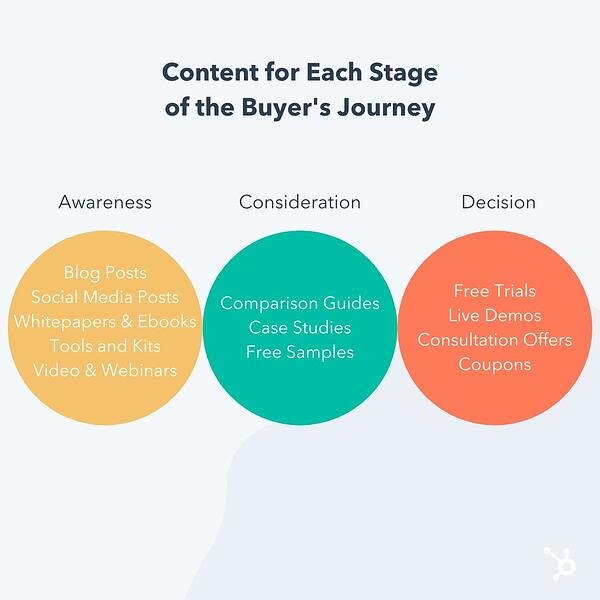
Blog Post
A blog post is an ideal piece of content targeting the awareness stage. By targeting a pain, problem, or other topic your target audience wants to discover and then posting it to your website, you’re creating a brand asset that’s crawlable by Google and discoverable by search engine users. You can also promote your blog content across other channels.
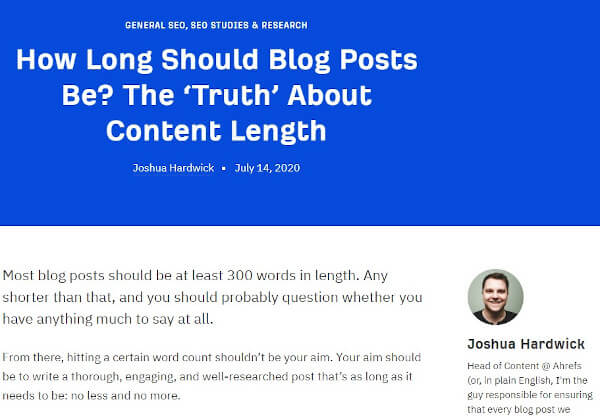
Ahrefs is a great example of a brand that does blog content right. They include original data and informational advice to create long-form articles that serve their audience.
Social Media Post
Social media is a channel that can be used to promote your other content, and you can also create content specifically for the channel. According to Pew Research, 72% of the public uses some form of social media, so it’s likely that your audience is native to this channel. Unlike blog posts, social media posts are likely shorter form, and video consumption is also on the rise.
In the above example, HubSpot Agency Partner Yokel Local shares attractive customer marketing tips on the LinkedIn platform. SlideShare formats are popular on LinkedIn, so the content is created to be snackable with short-form take-aways.
Whitepaper
A whitepaper is an organization’s report or guide on a particular topic. Whitepapers are especially useful as downloadable offers when a reader wants to go more in-depth on a particular subject they’re reading about. For whitepapers, it’s important to provide information that can’t be found elsewhere so that your audience understands the value of the report and is compelled to get it.

Every year, HubSpot publishes a survey on the state of marketing to provide helpful guidance based on thought leadership to marketers, sales professionals, and business owners. Inside, readers find statistics from a broad survey as well as industry experts’ opinions on what the data means and where the industry is going.
Checklist
For tasks that are complicated and have a lot of moving parts, individuals may simply want a blueprint that spells out what they’re supposed to do to achieve their end goal.
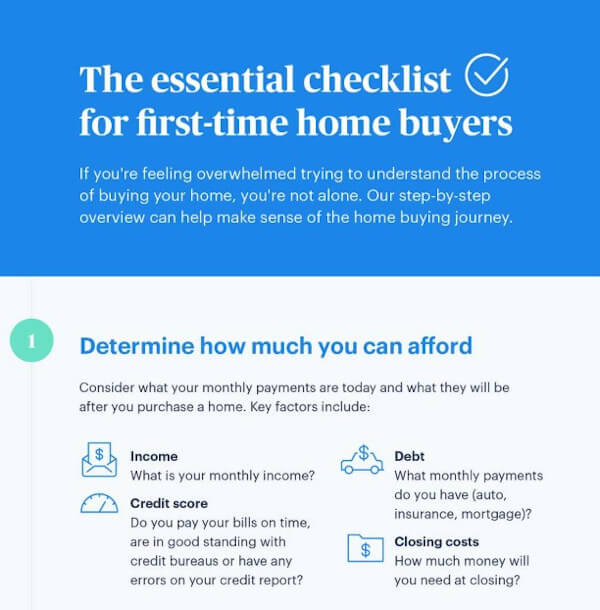
Buying a home is a perfect example of this, and Opendoor meets their audience’s need by providing a handy checklist (in infographic form!) for the reader that spells out all the steps that need to be taken. The graphic is aesthetically pleasing and even allows room for a few tips along the way.
How-To Video
Sometimes, the best way to solve a pain or problem is to learn a new skill. Sure, a purchase of some kind may be required along the way, but the audience may need to become more informed about the problem and how to solve it. That’s where instructional video content comes in.
Whiteboard Fridays is a popular video series by Moz where SEO principles are broken down to the audience in easy-to-understand language and visuals. Moz knows that SEO is a difficult subject and aims to make it accessible to their viewers.
Kit or Tool
Informational content provided to a broader audience may not always be enough for your buyer persona to make a decision or take action of some kind. In some cases, they may require a little more utility or personalization. That’s why kits and tools are a great piece of content to create to help the reader along their path to purchase.
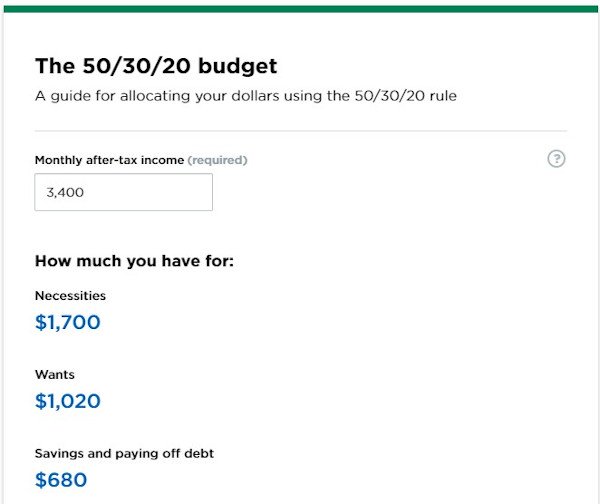
Nerdwallet creates content around several financial topics, budgeting being one of them. It can be difficult to create a budget, though, so they developed a calculator that allows the user to provide their own numbers in order to receive a customized recommendation.
Ebook or Tip Sheet
Similar to whitepapers, ebooks and tip sheets are great options for downloadable content. In contrast, they tend to be shorter form and more actionable.
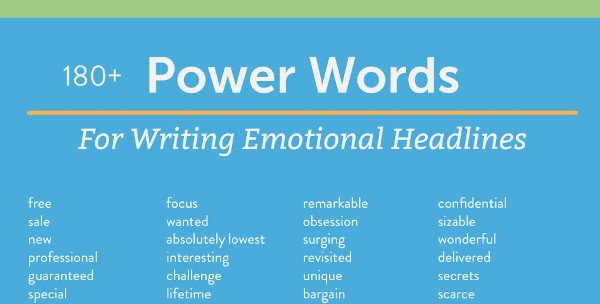
CoSchedule combines a few tactics by promoting their headline analyzer tool with a blog post about writing great headlines that drive traffic. On that blog post, they include a great tip sheet of powerful words to include in headlines if you want to catch a reader’s attention.
Educational Webinar
A webinar is a web seminar where information is typically provided through video. A webinar can be prerecorded or streamed live, and this opens up tons of possibilities to disseminate information to an audience who wants more visual and auditory content.
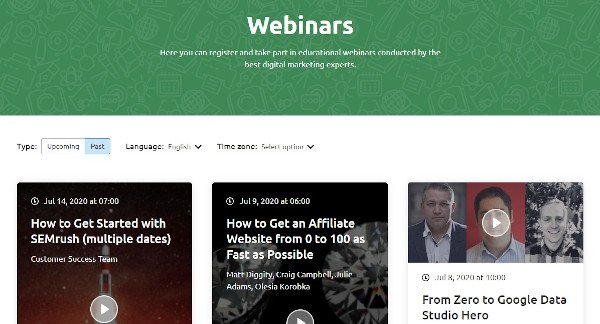
SEMrush makes webinars a key part of their content marketing strategy, often running a valuable topic multiple times to get more mileage out of the content.
Product Comparison Guides
In the consideration stage, the buyer persona is still considering solutions to their pain or problem. For this reason, product comparisons are a great way to help them make a decision.
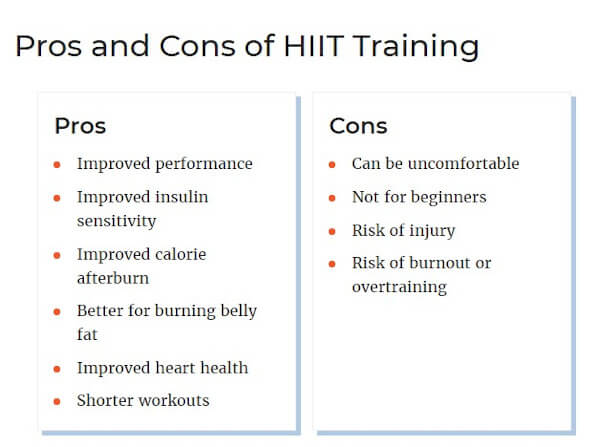
Verywell Fit provides such a comparison to help their readers choose between high-intensity workouts vs. steady-state cardio, providing the pros and cons and use cases for each.
Case Study
A case study can be used in both the consideration stage and the decision stage simultaneously by convincing the reader that the solution works by establishing that the provider achieves results for their clients by administering the solution. A good case study will appeal to the emotions and logic of the persona by providing detailed information and quantitative data on the final solution.
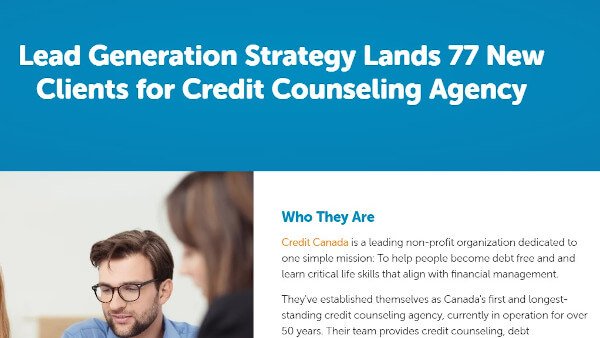
HubSpot Partner Agency Blueleadz does this by telling a story about their client and the problems they had while providing a detailed account of how they solved it.
Free Sample
A free sample is another example of content or an offer that overlaps between buyer’s journey stages. Consider this: An individual wants to paint the inside of their home, but they don’t know what color.
As they consider which color (the solution), they pick up paint chip cards from their hardware store. These cards are created by a provider based on their individual solution. When the individual falls in love with a color, they already know who the provider is that makes it.
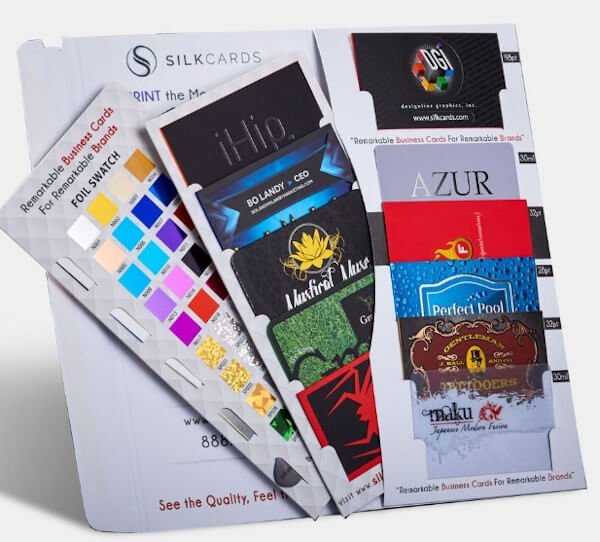
SILKCARDS taps into this buying behavior by offering samples of their unique printing methods on the content that they create. They know that their business is tactile, and digital content alone is not enough to close a deal. Once their prospective customer holds the sample in their hands, other business cards are put to shame.
Free Trial or Live Demo
What better way to know if you want to purchase a product than take it for a spin? Car dealerships have been using the “test drive” tactic for years because it works. If the product itself checks all the boxes the buyer has, all the sales team has to do is handle their objections and make the close.
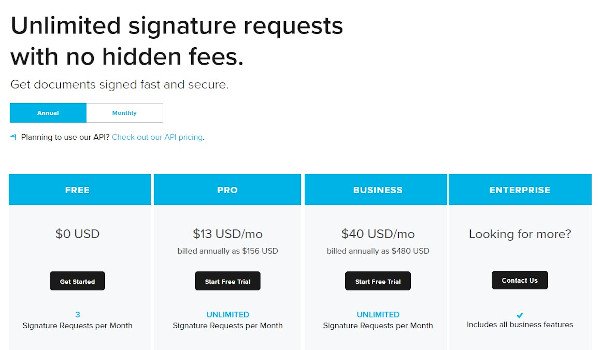
Hellosign does this well. Though they have a free option with limitations, they know that the key to getting clients into their larger tiers is by offering a free trial upfront. Their pricing page sets the prospect’s expectations and points them to the free trial.
Consultation Offer
A consultation is another example of providing just a little bit of service in exchange for the opportunity to close the sale. The best consultation offers reduce the anxiety of entering into a sales conversation by promising something concrete they can walk away with (a strategy or actionable advice) in exchange for their time.
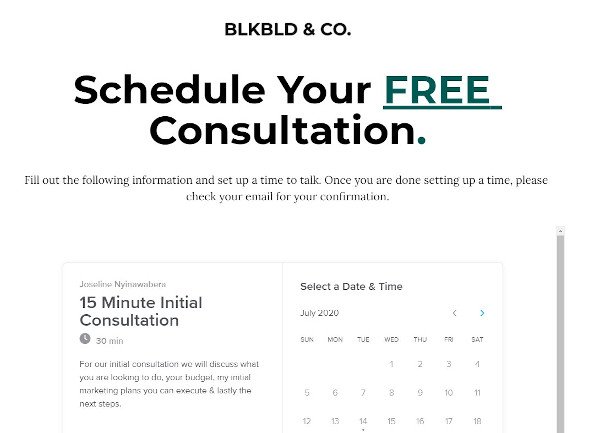
Blk Bld & Co.’s consultation offer is a great example because it reduces the friction of scheduling a consultation. By removing friction, this organization increases the chances of conversion.
Coupon
A coupon appeals to a fear of missing out (FOMO) mindset. By reducing the price by a certain amount, a coupon is handing a price objection while convincing the prospect that they’re leaving money on the table if they don’t use the coupon. This inertia enough to win the prospect’s business.

Fragrant Jewels does this well by gamifying their coupons. By spinning the wheel, the website visitors have the chance to get a coupon before checking out the products. They’ll likely be evaluating the products that are a good deal with the coupon they won.
In addition to decision stage content, you should also create content to delight your existing customers. This may include FAQ and knowledge base content to make the customer experience easier, coupons for the opportunity to upsell, and additional educative content that deepens their understanding of a topic.
Mapping Content Across All Stages of the Funnel and Buying Cycle
Every business has a unique sales funnel, sculpted and designed around their buyer’s unique journey. It’s a recipe that can’t necessarily be replicated from one business to another. When creating your own buyer’s journey, there are a number of factors specific to your business to take into consideration.
That said, the general approach remains the same: Understand your audience, develop your funnel around your industry and audience intent, and create a documented content marketing strategy that maps custom content specifically to each phase of their journey through the funnel.
Do it well, and this process will have the greatest possible impact on your customer relationships, as well as the greatest possible lift in your overall conversions.
Editor’s note: This post was originally published in August 2016 and has been updated for comprehensiveness.
Marketing Strategies
Generating The Spark For Memorable Virtual Experiences
/
/Now more than ever, marketers are competing for customers’ attention. With many professionals working from home, not only are you up against the internet, but you are angling for time in the midst of your customers’ workloads, emails, children, pets, laundry and whatever else is going on in their lives.
The potential for distraction is everywhere. So the primary goal needs to be getting and keeping your customer engaged, with limited time to achieve that.
I call this sustained engagement goal as “generating the spark” — creating an experience for a user that will ignite a lasting memory. But how do we transform traditional sales models into truly engaging, digital, interactive experiences that create a spark? Here are a few tips.
Brevity Is Your Friend
Traditionally, B2B companies focus on lots of details. In a first engagement, especially a digital one, the visitor needs to be able to connect very quickly to the value you provide. It’s critical to start with the digestibility of the message — an easy-to-understand story that shows logical progression. Don’t get caught up in the particulars at first. Remember that the minutia, which you may find important, probably doesn’t apply in your first interaction. Your goal is to get customers to return, so they can ask more detailed questions during the second engagement in their buyer journey.
Find Your Inner B2C
When we think of a virtual “connection,” we think of connecting with other people, not with content. But we make emotional connections with content, as well. The key ingredient to establishing a connection with content is creativity.
Traditionally, B2B marketers are on the conservative side when it comes to their content and customer engagement strategies. B2B buyers want to be entertained in the same way they are by consumer-focused marketing. B2B organizations can set themselves apart from the competition by embracing bold expression over the same old, conservative methods.
Bring Your Customer Into Virtual Environments
If you want your product to be remembered, you need to bring your buyer somewhere that will evoke emotion and feelings of connection. I like to categorize a virtual experience into three scenarios:
- Real, but impossible: Take your audience somewhere that exists in the real world but is not accessible because of physics. For example, if you are talking to the power of a processor or technical product specifications, you could drop your guest onto a motherboard or the working mechanism of a complicated device. This change of perspective transforms their perception of the products you sell, demonstrating unique value to the customer.
- The real world: You can recreate any place, but you have to know why you’re recreating it. The sky’s the limit in the virtual world and you can create a space that is widely inaccessible to the average person like an oil rig or medical laboratory.
- It’s OK to be abstract: Sometimes the value of a product or service can be conceptual, and that’s fine. This is an opportunity to place a user in a more creative or artistic space. If we can create a visually appealing environment — one that uses color, shape and captivating user interfaces in dynamic ways — the experience can elicit a visceral reaction, one that will create a lasting impression.
Creating the application environment is just the beginning of “generating the spark” for a buyer. As we move forward in this crazy new world, it will get increasingly more important to relate to users in creative and meaningful ways.
As Associate Director of Creative Services / Mixed Reality Experience Strategist at Kaon Interactive, Howard’s role is to innovate user interaction and engagement for applications for Fortune 500 companies. Howard’s passion for interactivity has helped Kaon’s customers tell complex stories while creating emotional connections and exciting their audiences.
Marketing Strategies
Instant messaging has taken over the world, but this is just the beginning
30-second summary:
- Chatbots will soon be ubiquitous in written business communication, and they present a paradox that flips everything consumers think they know about automation on its head.
- Customer input to a company is valuable information, and using messaging apps, customer feedback can also become actionable. By interacting with a bot, a customer is leaving an eternal record of their input, whatever it is, in a system that can read, analyze, and internalize the information.
- Furthermore, instant messaging apps and VoIP present the possibility of integrating video or phone calls into your communication. The combination of fluid written conversation and video has opened the door to digital transmission in many fields traditionally reserved for face-to-face interactions.
- Instant messaging has a fluidity that resembles that of spoken conversation. This fluidity is coming to good use now, especially for small businesses, which operate by one-on-one interactions, for which investments in big and bulky IT-systems are beyond superfluous.
The conversation surrounding the digitization of society has sounded in classrooms, newsrooms, and marketing departments for decades. During the pandemic, the process was accelerated as instant messaging came to the rescue, earning much-justified praise for helping people maintain connections even at a distance.
If there is one thing the process has taught us, it’s that the future has a way of sneaking up on us. So what will messaging look like, before we even know it?
The value of chatbots
Chatbots will soon be ubiquitous in written business communication, and they present a paradox that flips everything consumers think they know about automation on its head.
Generally, many people think the bots reflect over-automation and less-personalized service. Yet regular, human employees at corporations usually have very standardized, canned responses as well, offering only a veneer of personal service.
Chatbots reveal that the truly important part of the communication between a business and its customers is what the customers have to say, and bots’ role will become increasingly important.
Customer input to a company is valuable information, and using messaging apps, customer feedback can also become actionable. By interacting with a bot, a customer is leaving an eternal record of their input, whatever it is, in a system that can read, analyze, and internalize the information.
Instant messaging apps and VoIP provide an added layer of personalization
Furthermore, instant messaging apps and VoIP present the possibility of integrating video or phone calls into your communication. The combination of fluid written conversation and video has opened the door to digital transmission in many fields traditionally reserved for face-to-face interactions.
Tele-health, yoga-classes, and education are but a few examples of services ready to adapt, and they quickly managed to deploy instant messaging.
Experiences resembling one-on-one interactions, but still taking place at a distance, are essential and more useful than ever before. This will remain true well after COVID, as businesses and individuals alike become accustomed to the efficiency and effectiveness of such interactions.
Until now, messaging has mostly involved replicating real-world communication in the virtual world as seamlessly as possible.
But what if virtual communication were actually an improvement of physical communication? Imagine having a live call with someone across the globe who speaks a different language.
In real-time, the software can recognize the speech, anachronistically translate it, intelligently adjust for tone, prevent misunderstanding, or warn you that you might be stumbling into a cross-cultural faux pas.
The software could be intelligent and integrate with your calendar. As soon as you agree to meet someone for dinner, automatically, a reservation is made at your favorite restaurant and the event is added to your calendars.
This technology will be made available sooner than we think, and messaging apps will be the ones to implement them.
Instant messaging to play a major role in the evolution of communication
Messaging services will become the bridge between impersonal email and human touch. There is a reason messaging apps consume the most significant part of people’s internet use.
Whether consumers use social media platforms, dating apps, or office communication systems, it’s the messaging that gets people hooked.
Instant messaging has a fluidity that resembles that of spoken conversation. This fluidity is coming to good use now, especially for small businesses, which operate by one-on-one interactions, for which investments in big and bulky IT-systems are beyond superfluous.
Though it might not seem like it, society is still new to digital communications. The technology is in its infancy, and companies and individuals alike are still figuring out how to harness it in the best way.
By expanding its functionality and integrating instant messenger services to more facets of society, we improve the quality of the conversation between people, businesses, and institutions—one more step along the path to enhancing society with digital technologies.
Djamel Agaoua is the CEO of Rakuten Viber, one of the world’s largest mobile applications with 800+ million users worldwide, offering a range of features such as one-on-one chats, video calls, group messaging, social shopping, and updates. A veteran executive with a track record of growing innovative global techs, Djamel is a private investor and sought-after board member, advisor, and speaker.
The post Instant messaging has taken over the world, but this is just the beginning appeared first on ClickZ.
-
 Business3 weeks ago
Business3 weeks agoBernice King, Ava DuVernay reflect on the legacy of John Lewis
-
World News2 weeks ago
Heavy rain threatens flood-weary Japan, Korean Peninsula
-
 Technology2 weeks ago
Technology2 weeks agoEverything New On Netflix This Weekend: July 25, 2020
-
Finance3 months ago
Will Equal Weighted Index Funds Outperform Their Benchmark Indexes?
-
Marketing Strategies7 months ago
Top 20 Workers’ Compensation Law Blogs & Websites To Follow in 2020
-
 World News7 months ago
World News7 months agoThe West Blames the Wuhan Coronavirus on China’s Love of Eating Wild Animals. The Truth Is More Complex
-
Economy9 months ago
Newsletter: Jobs, Consumers and Wages
-
 Finance8 months ago
Finance8 months ago$95 Grocery Budget + Weekly Menu Plan for 8

